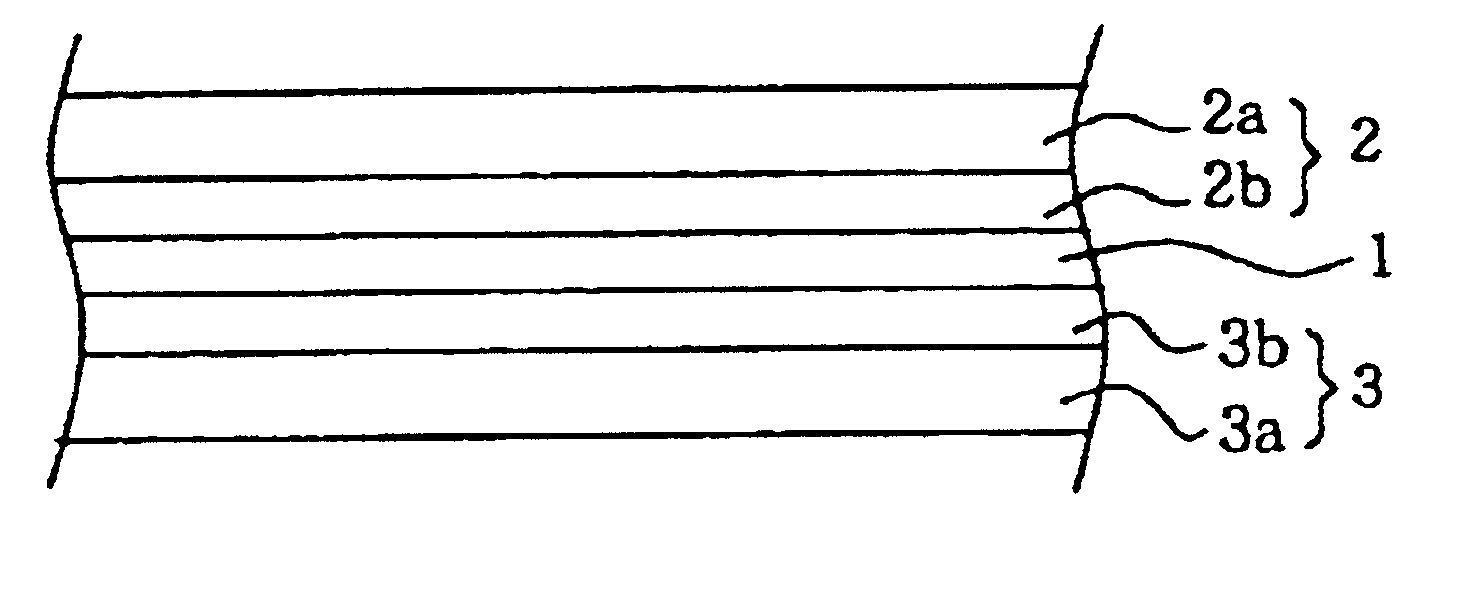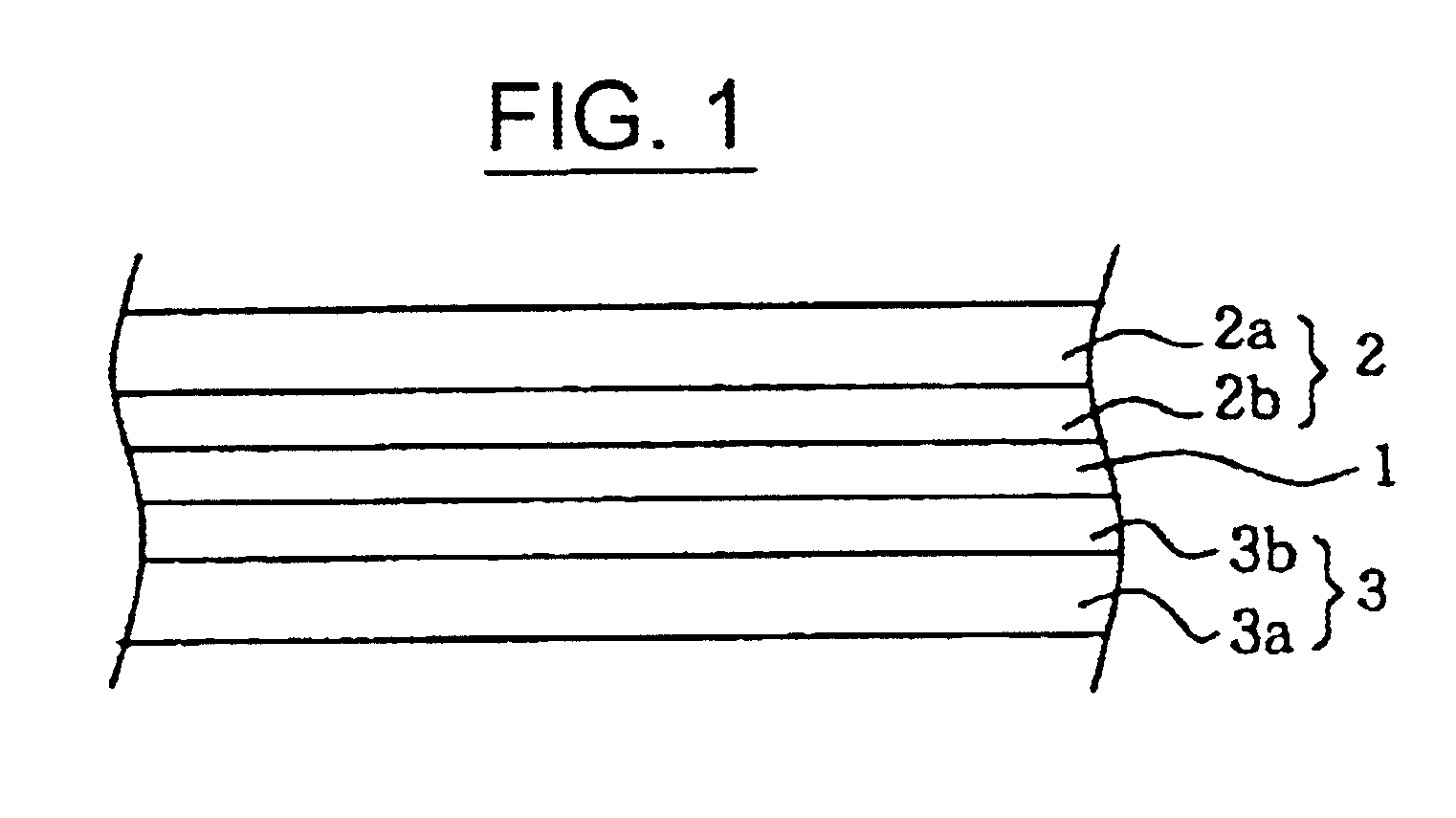Polymer electrolyte containing a vinylidene fluoride copolymer and a nonaqueous electrolytic solution, and nonaqueous battery containing the polymer electrolyte
a polymer electrolyte and vinylidene fluoride technology, which is applied in the direction of non-aqueous electrolyte cells, non-metal conductors, conductors, etc., can solve the problems of poor productivity, loss of shape, and poor reactivity of polymer electrolyte containing no electrolytic solution, etc., to achieve excellent strength, stable reactivity, and large shape
- Summary
- Abstract
- Description
- Claims
- Application Information
AI Technical Summary
Benefits of technology
Problems solved by technology
Method used
Image
Examples
polymer preparation example 1
Into an autoclave having an inner volume of 2 liters, 1075 g of deionized water, 0.42 g of methyl cellulose, 2.9 g of diisopropyl peroxydicarbonate, 378 g of vinylidene fluoride and 42 g of hexafluoropropylene were charged and subjected to 10 hours of suspension polymerization at 29.degree. C. After completion of the polymerization, the polymerization slurry was dewatered, washed with water and dried at 80.degree. C. for 20 hours to obtain a polymer powder. The polymerization yield was 89 wt. %, and the resultant polymer showed an inherent viscosity of 1.7 dl / g. As a result of .sup.19 F-NMR analysis, the polymer exhibited a weight ratio of vinylidene fluoride to hexafluoropropylene of 93:7, and an abnormal linkage (head-head or tail-tail linkage) content at vinylidene fluoride sites of 3.6%.
polymer preparation example 2
Into an autoclave having an inner volume of 2 liters, 1036 g of deionized water, 0.40 g of methyl cellulose, 2.8 g of diisopropyl peroxydicarbonate, 376 g of vinylidene fluoride and 4 g of trichlorofluoroethylene were charged and subjected to 16 hours of suspension polymerization at 28.degree. C. while adding 20 g of trifluorochloroethylene in division of 1 g each at every 30 minutes from 2 hours after the start of the polymerization. After completion of the polymerization, the polymerization slurry was dewatered, washed with water and dried at 80.degree. C. for 20 hours to obtain a polymer powder. The polymerization yield was 86 wt. %, and the resultant polymer showed an inherent viscosity of 1.8 dl / g. As a result of .sup.19 F-NMR analysis, the polymer exhibited a weight ratio of vinylidene fluoride to trifluorochloroethylene of 95:5.
polymer preparation example 3
Into an autoclave having an inner volume of 2 liters, 1075 g of deionized water, 0.42 g of methyl cellulose, 2.9 g of diisopropyl peroxydicarbonate, 365 g of vinylidene fluoride, 30 g of hexafluoropropylene and 25 g of trifluorochloroethylene were charged and subjected to 11 hours of suspension polymerization at 29.degree. C. After completion of the polymerization, the polymerization slurry was dewatered, washed with water and dried at 80.degree. C. for 20 hours to obtain a polymer powder. The polymerization yield was 90 wt. %, and the resultant polymer showed an inherent viscosity of 1.8 dl / g. As a result of .sup.19 F-NMR analysis, the polymer exhibited weight ratios of vinylidene fluoride to hexafluoropropylene to trifluorochloroethylene of 90:5:5.
PUM
| Property | Measurement | Unit |
|---|---|---|
| thickness | aaaaa | aaaaa |
| wt. % | aaaaa | aaaaa |
| temperature | aaaaa | aaaaa |
Abstract
Description
Claims
Application Information
 Login to View More
Login to View More - R&D
- Intellectual Property
- Life Sciences
- Materials
- Tech Scout
- Unparalleled Data Quality
- Higher Quality Content
- 60% Fewer Hallucinations
Browse by: Latest US Patents, China's latest patents, Technical Efficacy Thesaurus, Application Domain, Technology Topic, Popular Technical Reports.
© 2025 PatSnap. All rights reserved.Legal|Privacy policy|Modern Slavery Act Transparency Statement|Sitemap|About US| Contact US: help@patsnap.com


